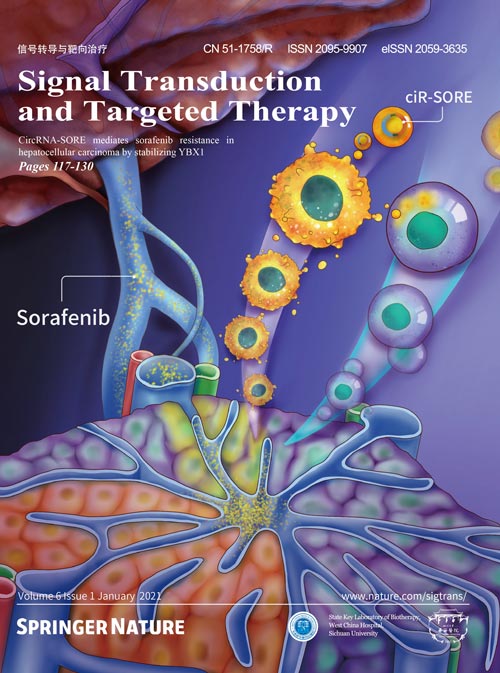Volume 6 Issue 1, Jan 2021:
Article
Longitudinal transcriptome analyses show robust T cell immunity during recovery from COVID-19
Hong-Yi Zheng,Min Xu,Cui-Xian Yang,Ren-Rong Tian,Mi Zhang,Jian-Jian Li,Xi-Cheng Wang,Zhao-Li Ding,Gui-Mei Li,Xiao-Lu Li,Yu-Qi He,Xing-Qi Dong,Yong-Gang Yao
ORCID: orcid.org/0000-0002-2955-0693 &…Yong-Tang Zheng
ORCID: orcid.org/0000-0001-5469-0324
Understanding the processes of immune regulation in patients infected with the severe acute respiratory syndrome coronavirus 2 (SARS-CoV-2) is crucial for improving treatment. Here, we performed longitudinal whole-transcriptome RNA sequencing on peripheral blood mononuclear cell (PBMC) samples from 18 patients with coronavirus disease 2019 (COVID-19) during their treatment, convalescence, and rehabilitation. After analyzing the regulatory networks of differentially expressed messenger RNAs (mRNAs), microRNAs (miRNAs) and long non-coding RNAs (lncRNAs) between the different clinical stages, we found that humoral immunity and type I interferon response were significantly downregulated, while robust T-cell activation and differentiation at the whole transcriptome level constituted the main events that occurred during recovery from COVID-19. The formation of this T cell immune response might be driven by the activation of activating protein-1 (AP-1) related signaling pathway and was weakly affected by other clinical features. These findings uncovered the dynamic pattern of immune responses and indicated the key role of T cell immunity in the creation of immune protection against this disease.
